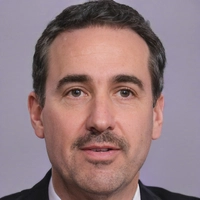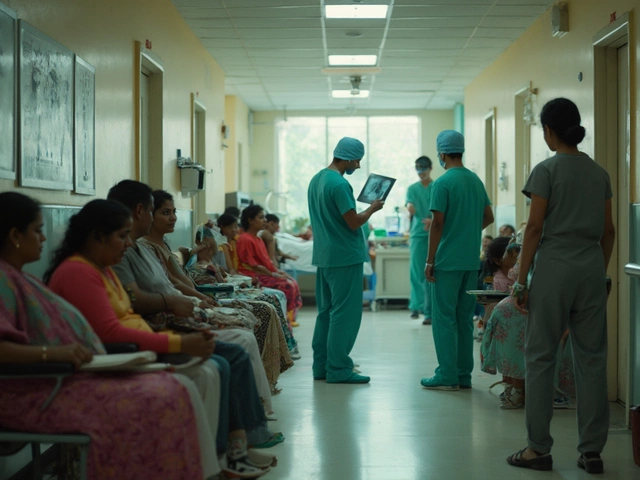
IVF Risk Calculator
Your IVF Risk Assessment
Ovarian Hyperstimulation Risk
-
Multiple Pregnancy Risk
-
Premature Birth Risk
-
Emotional Stress Risk
-
Recommendations Based on Your Profile
If you’re considering assisted reproduction, the first thing that often pops up is the success rate. But what about the IVF risks that many people gloss over? Understanding the less‑glamorous side of in‑vitro fertilization helps you weigh the true cost of a baby that’s been created in a lab.
What IVF Actually Is
InVitro Fertilization (IVF) is a series of medical procedures that combine an egg and sperm outside the body, then transfer the resulting embryo into the uterus. First performed in 1978, IVF has helped millions of couples become parents, but the technology also carries a bundle of medical, emotional, and financial side effects.
Medical Risks to the Mother
IVF begins with hormonal stimulation to produce multiple eggs. While this boosts pregnancy chances, it can also trigger Ovarian Hyperstimulation Syndrome (OHSS) - a condition where the ovaries swell and leak fluid into the abdomen. Mild OHSS feels like bloating, but severe cases can cause rapid weight gain, shortness of breath, and even blood clots.
Other short‑term issues include bruising at the egg‑retrieval site, cramping, and minor bleeding. Most complications resolve within a week, yet they add stress and sometimes require hospital observation.
Long‑term concerns are rarer but worth noting. Some studies suggest a modest increase in the risk of ovarian cancer for women who undergo repeated high‑dose stimulation cycles. The data aren’t conclusive, but the possibility underscores the need for careful monitoring.
Risks to the Baby
Transferring more than one embryo is a common way to improve success odds, but it also raises the chance of Multiple Pregnancy. Twins, triplets, or higher-order multiples face higher rates of premature birth, low birth weight, and neonatal intensive‑care admission.
Premature Birth is defined as delivery before 37 weeks of gestation. In IVF‑conceived twins, the preterm birth rate hovers around 55%, compared with roughly 10% in natural singleton pregnancies. Prematurity can lead to lifelong health challenges such as respiratory problems and developmental delays.
There is also a slightly elevated risk of Birth Defects. Large registry analyses from the United States and Europe report a 1.5‑ to 2‑fold increase in congenital anomalies for IVF babies versus naturally conceived peers, especially when frozen embryo transfer is used.
These risks don’t mean IVF is unsafe-most infants are perfectly healthy-but they are statistically higher and should be part of any decision‑making conversation.

Emotional and Psychological Toll
The roller‑coaster of hormone injections, invasive procedures, and waiting periods can fuel Emotional Stress. Couples often report anxiety, depression, and feelings of loss after each failed cycle. A 2023 survey of 1,200 IVF patients in the UK found that 38% met clinical criteria for moderate to severe depression during treatment.
Even successful outcomes can bring mixed emotions-joy tempered by fear of miscarriage or concern over long‑term health of the child. Support groups and counseling are proven ways to mitigate these feelings, yet many clinics still under‑provide mental‑health resources.
Financial and Ethical Considerations
IVF is pricey. In the United States, a single fresh cycle costs between $12,000 and $15,000, not including medication, which can add another $4,000‑$6,000. Financial Cost quickly multiplies when multiple cycles, embryo freezing, or pre‑implantation genetic testing are required. For many families, the expenses exceed insurance coverage limits, leading to debt or the decision to stop treatment.
Beyond money, there are Ethical Concerns that linger. Questions arise about the disposition of surplus embryos, the morality of selecting embryos based on genetic traits, and the societal pressure on couples to “try everything” before accepting a child‑free life.
These dilemmas can cause moral distress, especially when cultural or religious values clash with the technology’s capabilities.
Mitigating the Downsides: Best‑Practice Strategies
- Single‑Embryo Transfer (SET): Opting for one high‑quality embryo reduces the odds of multiple pregnancy while maintaining respectable success rates, especially when combined with blastocyst culture.
- Careful Hormone Monitoring: Personalized dosage protocols based on age, BMI, and ovarian reserve can lower OHSS risk. Some clinics now use a “low‑dose antagonist” regimen proven to halve severe OHSS cases.
- Pre‑implantation Genetic Testing (PGT): Screening embryos for chromosomal abnormalities helps improve implantation success and may lower miscarriage rates, though it adds cost.
- Psychological Support: Routine counseling, peer‑support groups, and stress‑management techniques (mindfulness, yoga) are linked to higher patient satisfaction and lower dropout rates.
- Financial Planning: Investigate insurance coverage, employer benefits, and financing options early. Some programs offer refund guarantees after a set number of cycles.

Common IVF Complications - Quick Reference
| Complication | Typical Frequency | Severity |
|---|---|---|
| Ovarian Hyperstimulation Syndrome (mild) | 5‑10% per cycle | Low - self‑limiting |
| OHSS (severe) | 0.5‑1% per cycle | High - may require hospitalization |
| Multiple Pregnancy | 15‑30% when >1 embryo transferred | Medium‑High - prematurity risk |
| Premature Birth (IVF twins) | ~55% of twin births | High - NICU admission |
| Birth Defects | 1.5‑2% higher than natural conception | Variable |
| Emotional Distress (clinical levels) | 30‑40% during treatment | Medium - may need counseling |
Bottom Line: Making an Informed Choice
IVF offers a path to parenthood for many who otherwise couldn’t experience it, but the process isn’t free of trade‑offs. By recognizing the medical, emotional, and financial downsides, you can work with your fertility team to tailor a safer, more sustainable plan. Ask your doctor about single‑embryo transfer, low‑dose stimulation, and mental‑health resources. When you know the full picture, the decision feels less like a gamble and more like a calculated step toward your family’s future.
Frequently Asked Questions
How common is Ovarian Hyperstimulation Syndrome?
Mild OHSS occurs in about 5‑10% of IVF cycles, while severe cases affect roughly 0.5‑1% of patients. Modern protocols that use lower hormone doses have lowered the severe‑case rate.
Can IVF increase the risk of birth defects?
Large registry studies show a modest 1.5‑ to 2‑fold rise in certain congenital anomalies for IVF babies compared with naturally conceived children. The absolute risk remains low, but it’s a factor to discuss with your specialist.
What is the best way to avoid multiple pregnancies?
Opt for a single‑embryo transfer (SET) when possible. Advances in embryo culture now give a single high‑quality blastocyst a success chance close to that of multiple embryos, dramatically cutting the twin‑rate.
Is emotional counseling covered by insurance?
Coverage varies widely. Some plans include mental‑health benefits that can be applied to fertility‑related counseling, while others treat it as a separate service. Check your policy details early in the process.
How many IVF cycles are typical before success?
On average, couples achieve a live birth after 2‑3 complete cycles. Success rates drop after age 40, so age‑specific counseling is crucial.





